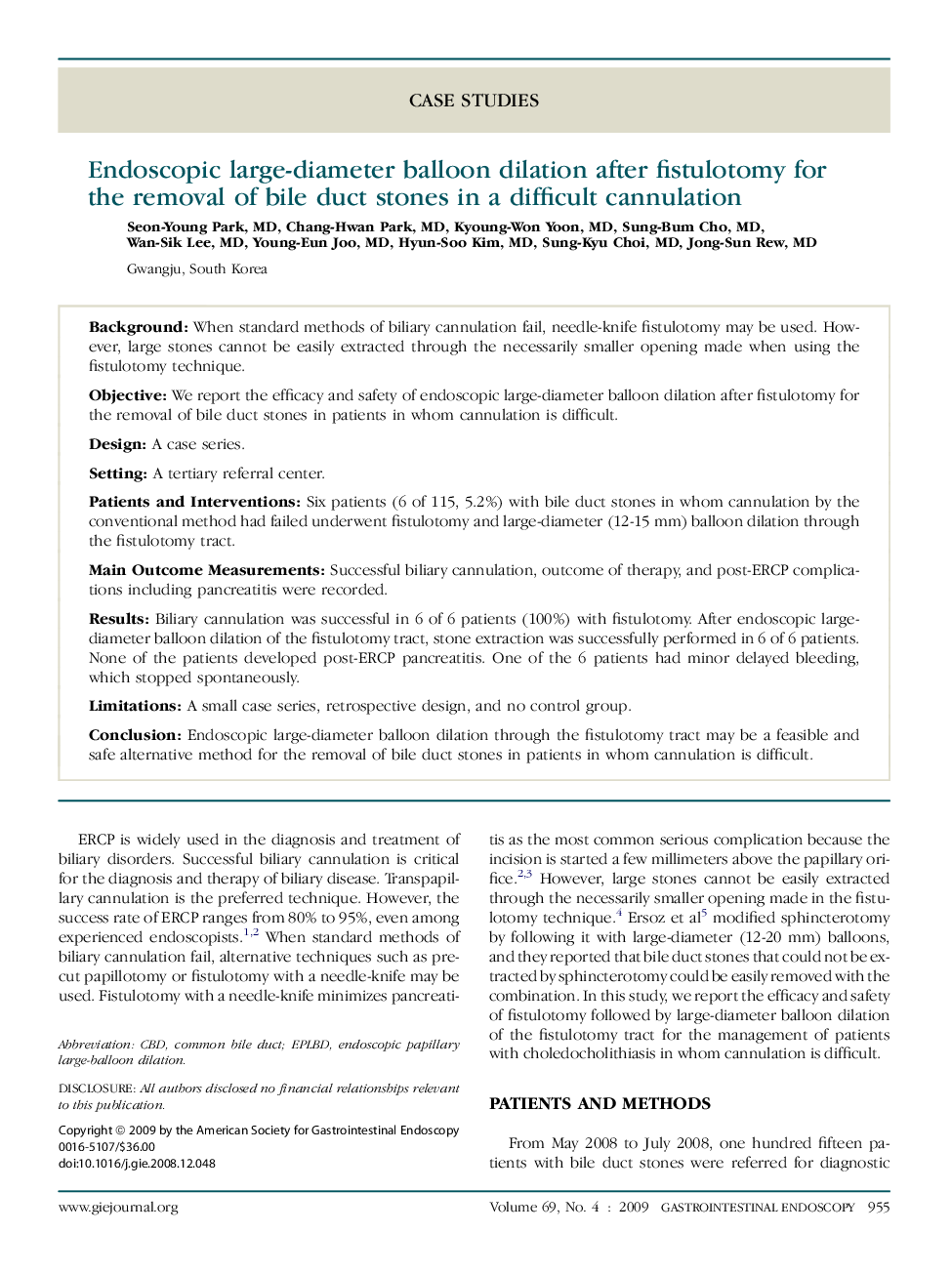| Article ID | Journal | Published Year | Pages | File Type |
|---|---|---|---|---|
| 3306545 | Gastrointestinal Endoscopy | 2009 | 5 Pages |
BackgroundWhen standard methods of biliary cannulation fail, needle-knife fistulotomy may be used. However, large stones cannot be easily extracted through the necessarily smaller opening made when using the fistulotomy technique.ObjectiveWe report the efficacy and safety of endoscopic large-diameter balloon dilation after fistulotomy for the removal of bile duct stones in patients in whom cannulation is difficult.DesignA case series.SettingA tertiary referral center.Patients and InterventionsSix patients (6 of 115, 5.2%) with bile duct stones in whom cannulation by the conventional method had failed underwent fistulotomy and large-diameter (12-15 mm) balloon dilation through the fistulotomy tract.Main Outcome MeasurementsSuccessful biliary cannulation, outcome of therapy, and post-ERCP complications including pancreatitis were recorded.ResultsBiliary cannulation was successful in 6 of 6 patients (100%) with fistulotomy. After endoscopic large-diameter balloon dilation of the fistulotomy tract, stone extraction was successfully performed in 6 of 6 patients. None of the patients developed post-ERCP pancreatitis. One of the 6 patients had minor delayed bleeding, which stopped spontaneously.LimitationsA small case series, retrospective design, and no control group.ConclusionEndoscopic large-diameter balloon dilation through the fistulotomy tract may be a feasible and safe alternative method for the removal of bile duct stones in patients in whom cannulation is difficult.
